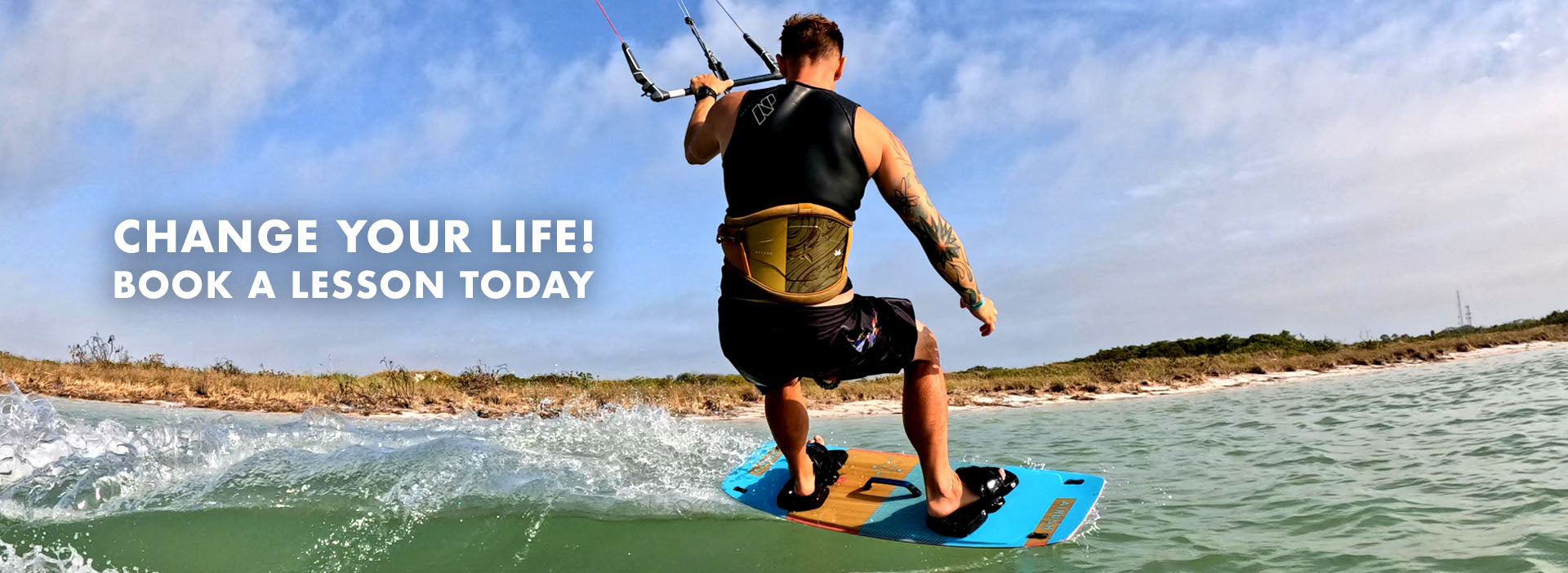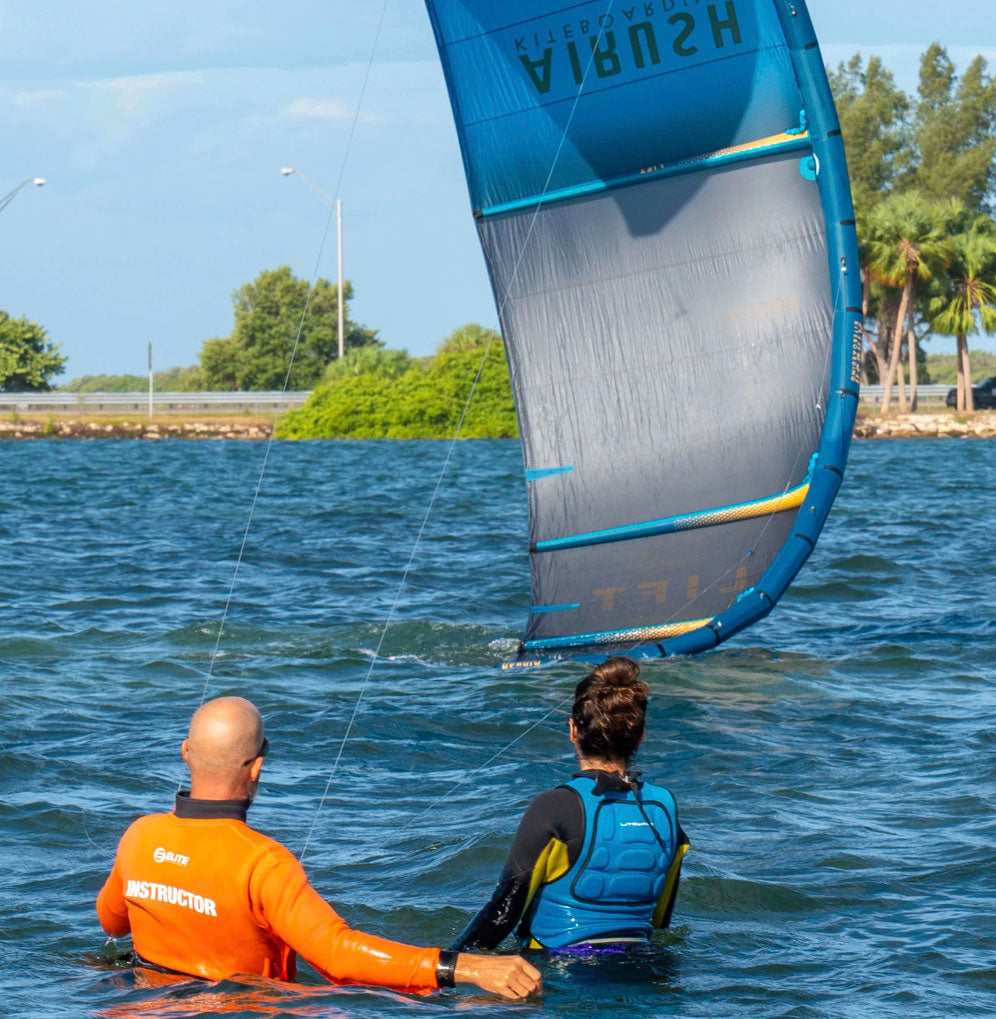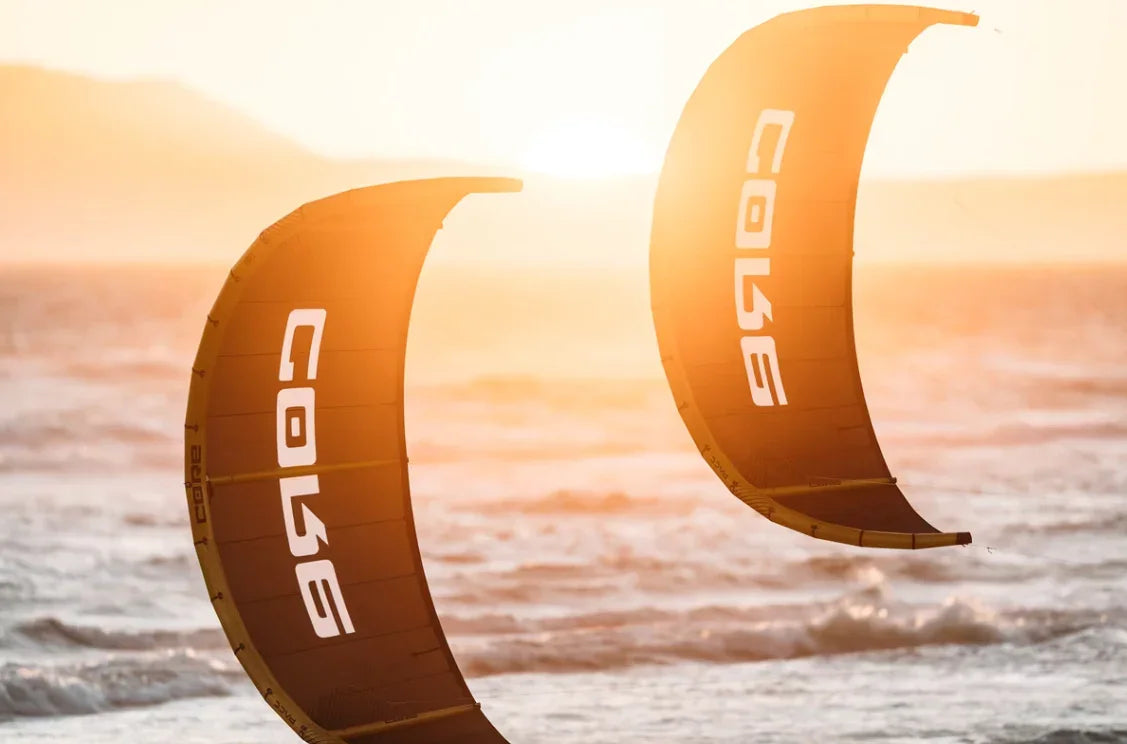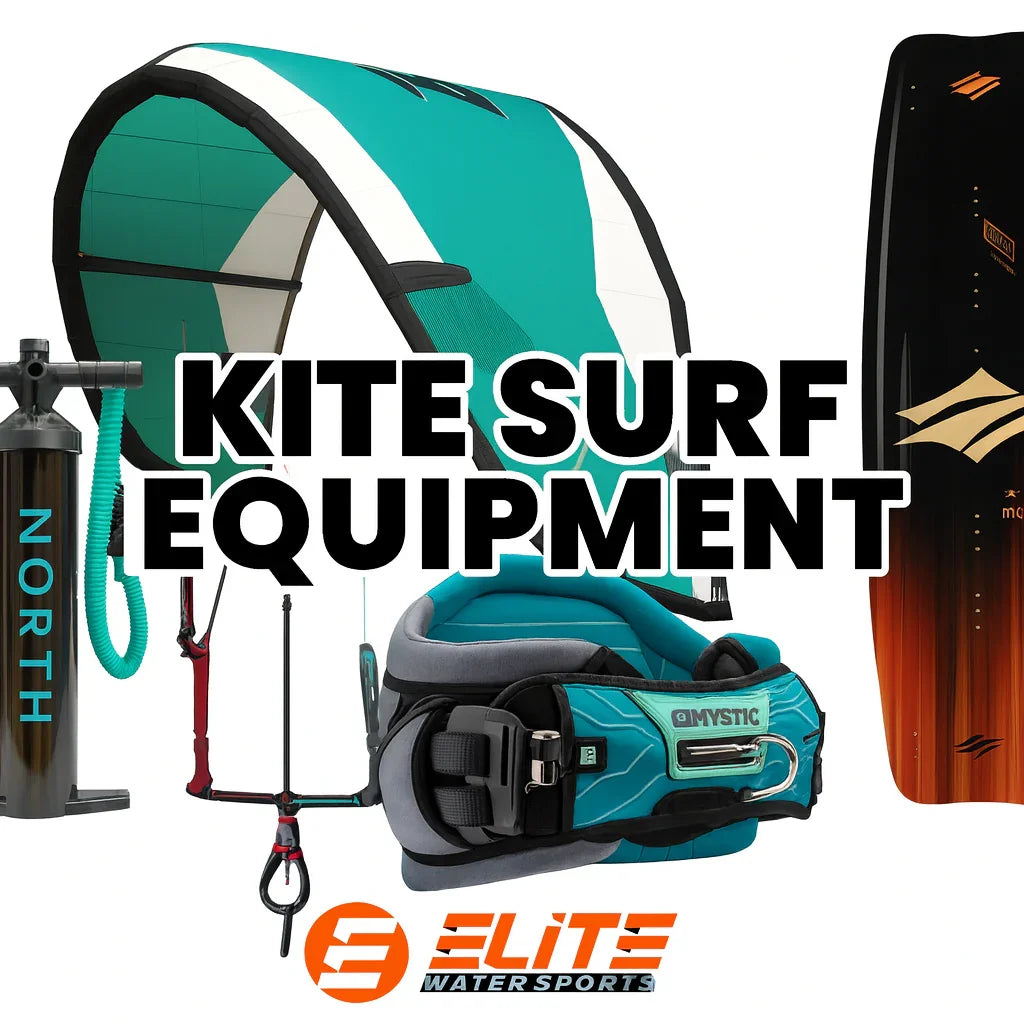ELITE WATERSPORTS
Last updated 3-12 -2025
How to get up after a fall kiteboarding
Everything you need to know.

How to get up after a crash kiteboarding
You’re floating backward, struggling to steer your kite, and your board is nowhere near your feet. Sound familiar? It happens to every kiteboarder—beginners and seasoned riders alike. But instead of flailing and wasting energy, there are three proven ways to get back on your board and riding again.
💬 Aaron’s Take:"One of the biggest mistakes I see is people panicking after a fall. The key is to reset—control your kite first, then focus on the board. Once you have a plan, getting back up is way easier."
In this guide, we’ll break down three techniques to recover quickly after a crash, whether you're just starting out or refining your skills. By the end, you’ll have the confidence to get back on your feet faster and spend more time riding.




Table Of Contents
- Why Getting Back Up Matters – And Why It’s Harder Than You Think
- Technique #1 – The Newbie’s Quick Escape: Body Dragging
- Technique #2 – The Snowboarder’s Pivot: Lifting the Board
- Technique #3 – The Full Send Recovery: Spin & Power Up
- Progress Faster by Mastering Recovery
Why Getting Back Up Matters – And Why It’s Harder Than You Think
Crashing is part of kiteboarding, but what happens next determines how quickly you get back to riding—or if you spend the next few minutes fighting the water. The challenge isn’t just about getting the board back on your feet—it’s about keeping control of the kite, maintaining balance, and using the right technique for the situation.
💬 Aaron’s Take: "A lot of riders make it harder on themselves by trying to muscle through the recovery. The trick is to work with the wind and the kite, not against them."
Most recovery struggles come down to:


Why Do Kiteboarders Struggle to Recover?
- Losing kite control – If the kite isn’t stable, you’ll be fighting against it.
- Wrong board positioning – If your board is stuck upwind or out of reach, you’ll struggle to reset.
- Wind conditions – Light wind? You’ll need a different technique than in stronger gusts.
No matter the conditions, the key is to stay calm, follow a process, and choose the right recovery method. In the next sections, we’ll break down three effective ways to get back on your feet—whether you're body dragging, repositioning your board, or sending it with power.
Technique #1 – The Newbie’s Quick Escape: Body Dragging
If you’re a beginner or find yourself in a tricky spot, the fastest way to recover is to ditch the board and focus on kite control. Body dragging is an essential skill that every kiteboarder should master—it helps you stay in control, reposition yourself, and retrieve your board without struggling.
💬 Aaron’s Take: "A lot of new riders panic when they lose their board. But the board isn’t the priority—your kite is. Keep the kite steady first, then use body dragging to get back to the board."
How to Body Drag Back to Your Board
- Kick the board off – If you’re tangled up or losing control, let the board go.
- Keep the kite at 12:00 – This stabilizes you and prevents unnecessary power surges.
- Start a controlled body drag – Use small kite movements to generate forward motion.
- Switch to a one-handed body drag – Extend one arm forward like a rudder while keeping the other hand on the bar.
- Retrieve the board – Once you reach it, grab the handle and reset for a water start.


Why This Works
✔ Keeps you in control – Without worrying about the board, you can focus on flying the kite.
✔ Saves energy – Instead of flailing, body dragging helps you move efficiently through the water.
✔ Works in all conditions – Whether the wind is light or strong, this technique is reliable.
If you're new to kiteboarding, mastering body dragging will make every session easier. Even advanced riders use it when repositioning after a wipeout or when the board gets too far away.
Technique #2 – The Snowboarder’s Pivot: Lifting the Board
Sometimes, after a crash, your board ends up in an awkward position—floating upwind or stuck behind you—making it difficult to reset for a water start. Instead of struggling to force it into place, you can use the Snowboarder’s Pivot to lift and realign your board effortlessly.
💬 Aaron’s Take: "Most riders try to twist their body to bring the board around, but that actually makes things harder. The trick is to lift your legs out of the water, pivot, and let gravity help you."
How to Pivot and Reset Your Board
- Assess your kite position – If your kite is on the right, keep your board slightly favoring the left (or vice versa).
- Lift the board out of the water – Raise your legs to bring the board onto its edge.
- Pivot on your butt – Use a slight body twist to realign the board in front of you.
- Angle the board downwind – This sets you up for an easy water start.
- Steer the kite for power – Once aligned, initiate a smooth dive to pop up and ride away.


Why This Works
✔ Reduces resistance – Lifting the board out of the water makes repositioning easier.
✔ Keeps things controlled – Instead of thrashing, you’re using small, efficient movements.
✔ Prevents overcorrection – A common mistake is flipping the board too aggressively, which throws off balance.
This method is ideal for riders who prefer a seated reset—similar to how a snowboarder adjusts their stance before a drop-in. It’s an efficient way to recover without burning energy or getting tangled up.
Technique #3 – The Full Send Recovery: Spin & Power Up
If you’re floating backward, feeling disoriented, and struggling to steer your kite, this method will get you back in control fast. The Spin & Power Up technique is all about resetting your body position, engaging the kite, and using controlled power to get back up.
💬 Aaron’s Take:
"When you’re stuck floating backward, everything feels reversed—left is right, right is left, and it’s easy to get confused. The best thing you can do is reset to your stomach, get stable, and then send it."
How to Spin & Power Up
- Check your board attachment – If it’s still on your feet, great! If not, use body dragging first.
- Keep the kite steady at 12:00 – This prevents accidental power surges while you reposition.
- Spin onto your stomach – Roll over like you’re setting up for a body drag. This eliminates the disoriented “floating backward” feeling.
- Get a feel for the kite – If needed, do a few small figure-eight kite movements to generate lift and control.
- Commit to the send – When you feel balanced, send the kite and pop up into a smooth water start.

Why This Works
✔ Eliminates confusion – Spinning to your stomach resets your perspective, so kite steering feels natural again.
✔ Gives you better control – A stable position allows you to focus on kite movement before committing to the start.
✔ Boosts confidence – This method prevents hesitation and gives you the power needed for a clean recovery.
This technique is the fastest way to get back into a riding position when you feel out of sync. It works especially well in gusty conditions, where quick adjustments are needed to stay in control.
Which Recovery Method is Right for You?
Every crash is different, and the best recovery method depends on your position, board location, and wind conditions. Here’s how to choose the right technique for any situation:
If your board is far away and you need to regain control → Use body dragging
- Best for: Beginners, light-wind conditions, or situations where your board has drifted too far.
- Why it works: It prioritizes kite control first, ensuring you don’t lose more ground while retrieving the board.
- Pro tip: Keep your body streamlined to reduce drag and move efficiently.
If your board is close but positioned awkwardly → Use the snowboarder’s pivot
- Best for: Riders who need to realign their board without exhausting themselves.
- Why it works: Lifting your legs and pivoting avoids unnecessary struggle, making it easier to reset for a water start.
- Pro tip: Be mindful of your kite position—keeping it steady will make this method much smoother.
If you feel completely out of sync and disoriented → Use the spin & power-up method
- Best for: Gusty or challenging conditions where a mental reset is needed.
- Why it works: Flipping onto your stomach restores natural kite control, reducing confusion and allowing you to power up with confidence.
- Pro tip: Do a few small kite movements first to feel in control before fully committing to the water start.
No matter which technique you use, the most important thing is staying calm and working with the wind instead of fighting against it. Master these recovery methods, and you’ll drastically cut down the time spent flailing in the water!

Progress Faster by Mastering Recovery
Every kiteboarder crashes—it’s part of the sport. But what separates confident riders from frustrated ones is how quickly they recover. By practicing these three recovery techniques, you’ll waste less time struggling in the water and spend more time actually riding.
💬 Aaron’s Final Tip: "The best riders aren’t the ones who never crash—it’s the ones who recover the fastest. Take the time to practice these methods, and soon, getting back up will feel effortless."
Whether you’re a beginner learning the basics or an experienced rider refining your skills, having a plan for getting back on your feet makes all the difference. The more you practice, the more natural these techniques will feel—until getting back up becomes second nature.
If you're serious about progressing faster, refining your water starts, and boosting your confidence on the water, Elite Watersports is here to help.
🔗 Book a lesson with our expert instructors in St. Petersburg, FL: Elite Watersports Kiteboarding Lessons
More Kiteboarding Tips & Resources
For more beginner-friendly kiteboarding insights, check out:
📖 What Happens When You Crash a Kiteboarding Kite?
📖 Rethink Your Kiteboarding Water Start


Where to take kiteboarding lessons in Florida.
 Reserve A Lesson
Reserve A LessonThe nearest kiteboarding shop and kite school that services Dunedin and Clearwater is Elite Watersports located in St Petersburg. Give us a call and we can get you up and riding in no time. We teach kitesurfing lessons at Skyway beach a short drive south of Dunedin. Our condions are also beginner friendly and perfect for learning.
Call us for more info on kiteboarding in Florida.
Elite Watersports has served the Tampa and St Petersburg area for years. They offer kiteboarding and wingsurfing lessons. They also have a retail shop equpit with all of the latest kitesurfing gear.
If you need help give us a call. .
(727)-800-2202


Author

Ryan "Rygo" Goloversic
Rygo is a digital marketing expert, globally recognized kiteboarder, Airush team rider and an advocate for wakestyle kiteboarding. When he's not writing articles or producing kite videos you can catch him competing on the KPLxGKA world tour or grinding it out in the gym
Tags
Kiteboarding falls
You May Also Like
Want To learn more about kiteboarding?
Follow us to receive the latest update on our journey experience




